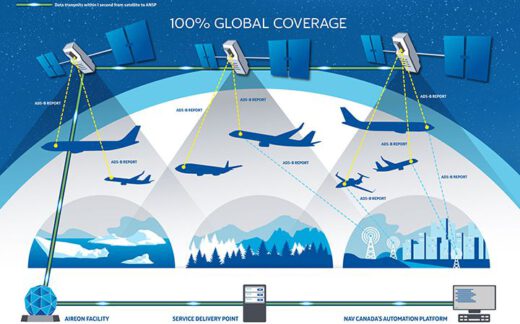
Aircraft flying in Class A and B airspace above 12,500 feet will have to be equipped with ADS-B Out that works with Nav Canada’s space-based ADS-B system by Feb. 23, 2023. ADS-B will not be required in Class C, D or E until 2026 at the earliest. The deadline was made jointly by the airspace management company and Transport Canada. “ADS-B is a foundational building block for our future airspace and operations,” said Nav Canada CEO Raymond G. Bohn. ”The Canadian equipage mandate − when combined with NAV CANADA’s space-based surveillance capabilities − will enhance safety and service.”
Space-based ADS-B is the norm in most of the world and requires transmitters that send their signals skyward. The U.S. has gone with a ground-based system that requires transmitters that beam downward. That means that operators who want to fly in all of North America will need ADS-B that has “antenna diversity,” meaning it beams up and down. The Canadian mandate requires antenna diversity meaning Canadian aircraft will be compliant with the U.S. system but most U.S. light aircraft don’t have the upward antennas and will have to add them to fly in Canada. The 2026 deadline is apparently somewhat fluid. “Aircraft operators and owners will have adequate time to meet the equipage requirements to use space-based ADS-B technology across the country.”
Copyright © 2026 | MH Magazine WordPress Theme by MH Themes
